Activity
A maze is a type of puzzle that has many different pathways, branches and dead ends. Mazes have only one path that leads to the finish but by creating different pathways, branches and dead ends it encourages the person playing to problem solve and find their way out. In this activity you are going to explore science, technology, engineering, art and math (STEAM) education as you craft a marble maze game using a simple process of design, create, build & test.
Engineers are people who create things using a process called the Engineer Design Process. The Engineer Design Process uses steps that help an engineer understand what it is they are building and how to build it in the best possible way. Using recycled materials and other materials found in your home, you will step into the role of an engineer by designing, creating and building your very own marble maze game.
Learners will explore STEAM education as they craft a marble maze game through a simple process of design, create, build & test. This marble maze game will require the learners to use recycled materials and other materials found in the home. Learners will become producers rather than consumers and engage in the engineer design process by creating a game. This type of engaging activity helps learners develop and support different computational thinking processes.
Background Information
Game design provides you with the opportunity to develop computational thinking skills. Computational thinking can be broken down into four main categories: decomposition, pattern recognition, abstraction, and algorithms. Decomposition is a thought process that allows you to break down a problem such as how to get a marble through a maze. Pattern recognition allows you to connect the given problem to problems you have previously encountered. Abstract thinking allows you to focus on relevant information and problem solve by focusing on your core knowledge surrounding the problem. Finally, algorithmic thinking allows you to develop a solution to a given problem through sequential rules.
You will design, create, build and test your own marble maze game. Throughout this process, you will use computational thinking to guide your design, build, create and testing phases. You will need to think about your steps in order to create a marble maze game that will challenge yourself as well as others who play it. You will explore your own thought process that allows you to design and create the steps that are required to solve your problem or successfully complete the marble maze game.
Materials
- Recycled cardboard box (shallow)
- Recycled materials such as: bottle caps, straws, small wooden beads or spools or cubes, newspaper, toilet paper rolls
- Scissors
- Tape or glue
- Marble (or similar sized object)
- Pencil
Paint (*optional for adding a pop of colour)
Step by Step Instructions
*OPTIONAL*: Paint the shallow cardboard box to add a pop of colour to your design! Let it dry.
STEP 1: Look at the materials you have to use and brainstorm or think about how you can include all the materials in your design. For example, could you roll the newspaper up to create walls in your maze? Or use straws to guide your marble to the finish line?
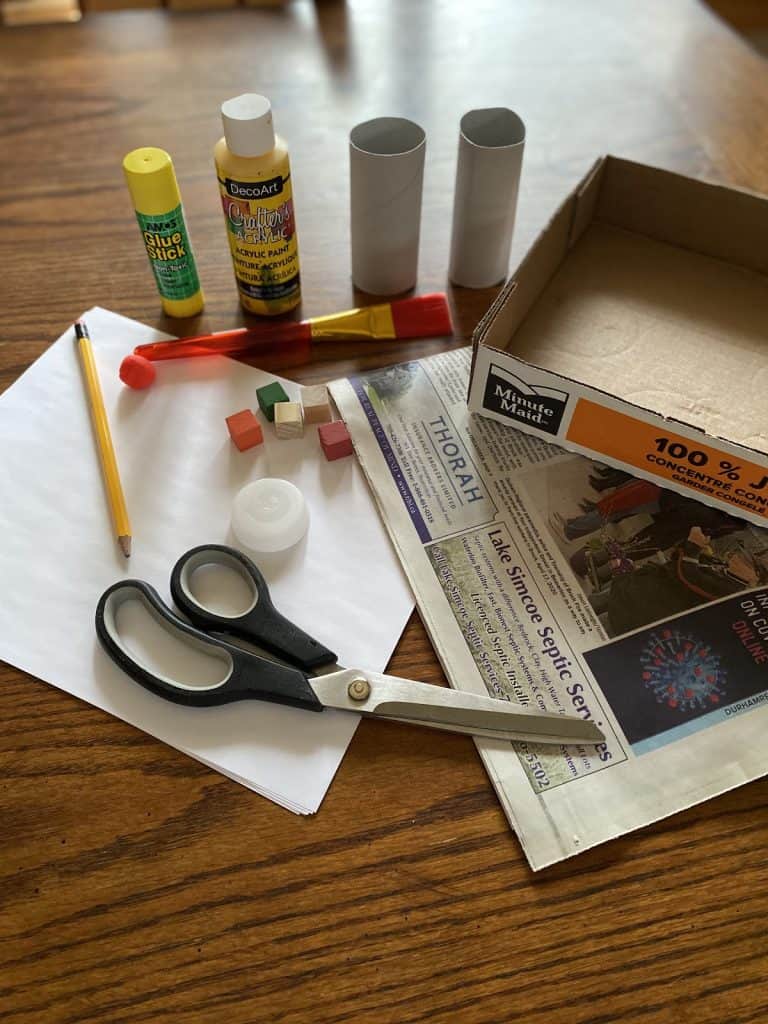
STEP 2: Pick where your maze will start and end on the cardboard and mark this using your pencil. If you would like to, you can cut a small hole that your marble will fall out once it’s reached the finish line (try asking a parent, guardian or older sibling for help using the scissors to cut through the cardboard).

STEP 3: Using your pencil, design a maze on the inside of your shallow cardboard box. This design can be easy, medium or hard, you are the engineer so it is up to you! Remember that mazes do not have direct pathways from the start to finish! They have many different pathways, branches and dead ends.
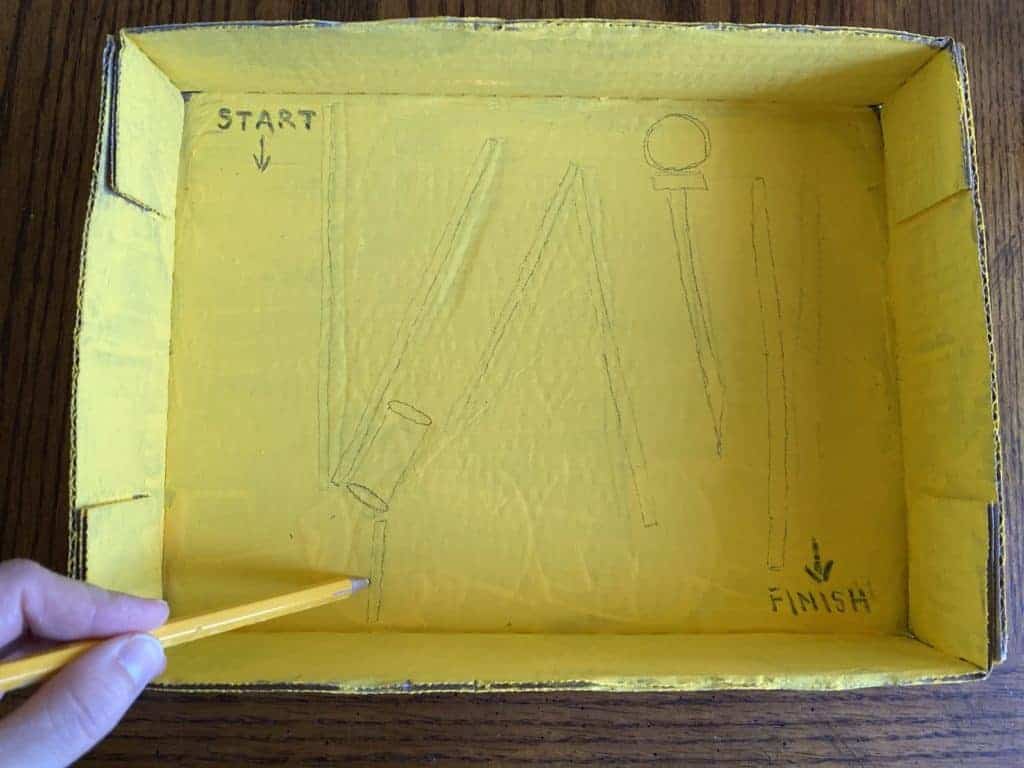
STEP 4: Cut up your straws or roll your newspaper into tight tubes, to create walls that will guide the marble through the maze. Make sure the walls are tall enough that the marble will not roll over them.
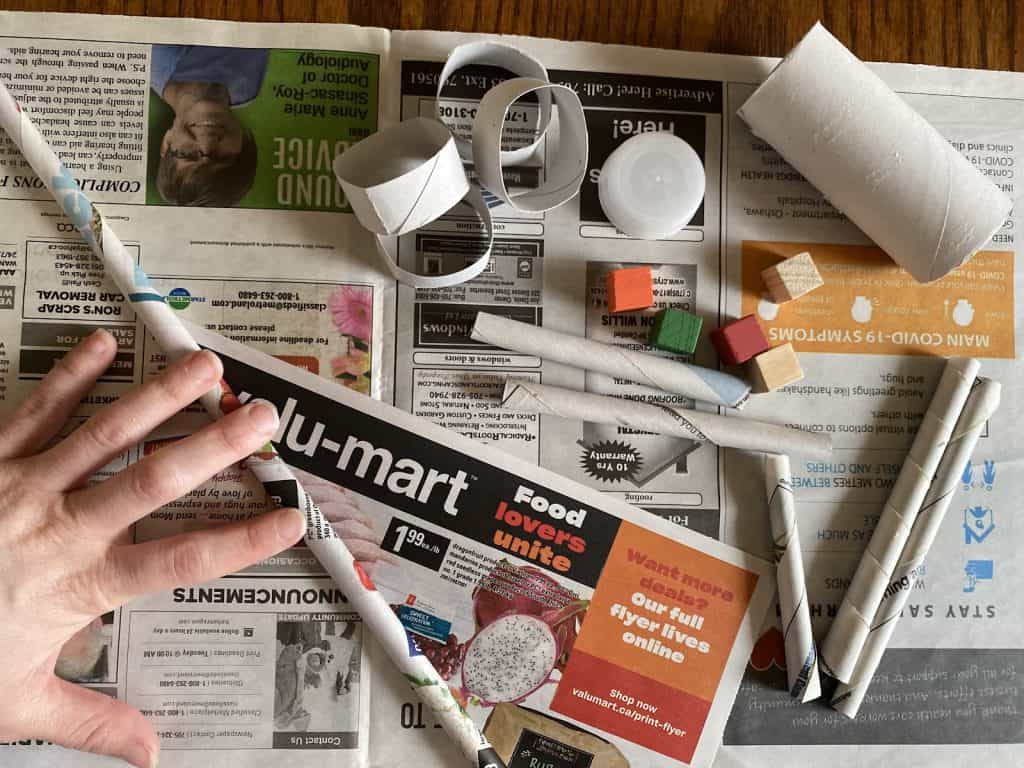
STEP 5: Using your glue, add the walls and pathways into your maze. Add in some obstacles that will make it hard for your marble to get through the maze. For example, add in bottle caps or small wooden items that your marble will need to navigate around or plan some dead ends that will trap your marble!
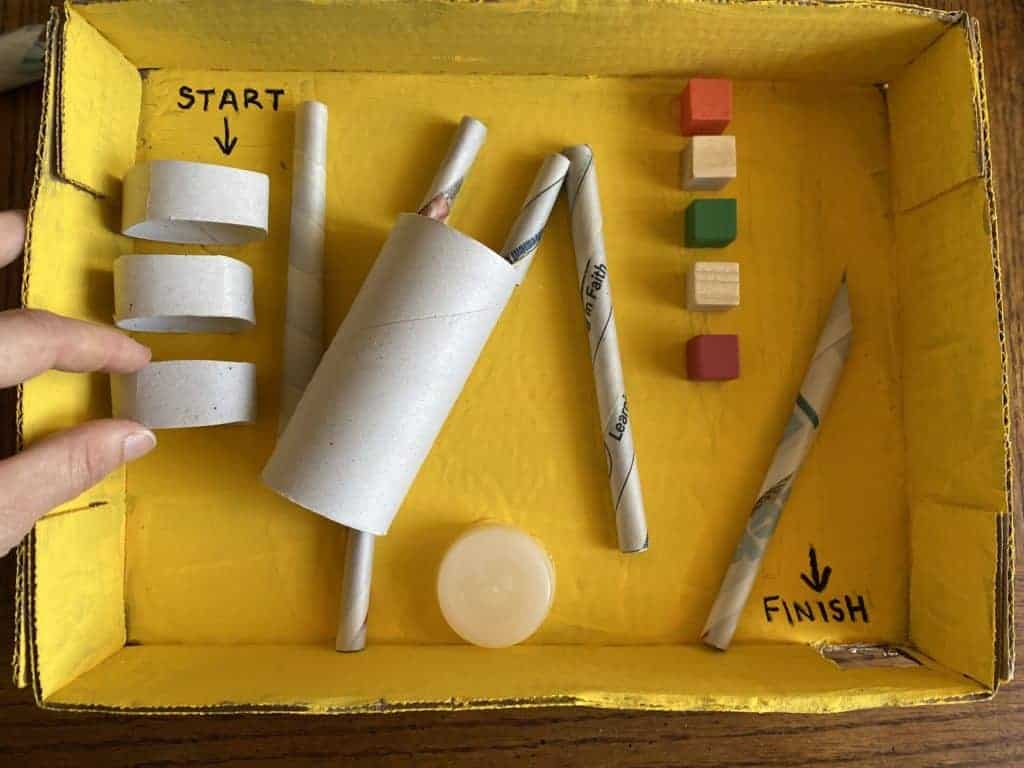
STEP 6: PLAY! Use your marble or a similar sized object and drive it around your maze. Challenge other people in your home to make their way through your maze and see if they can navigate to the finish line!
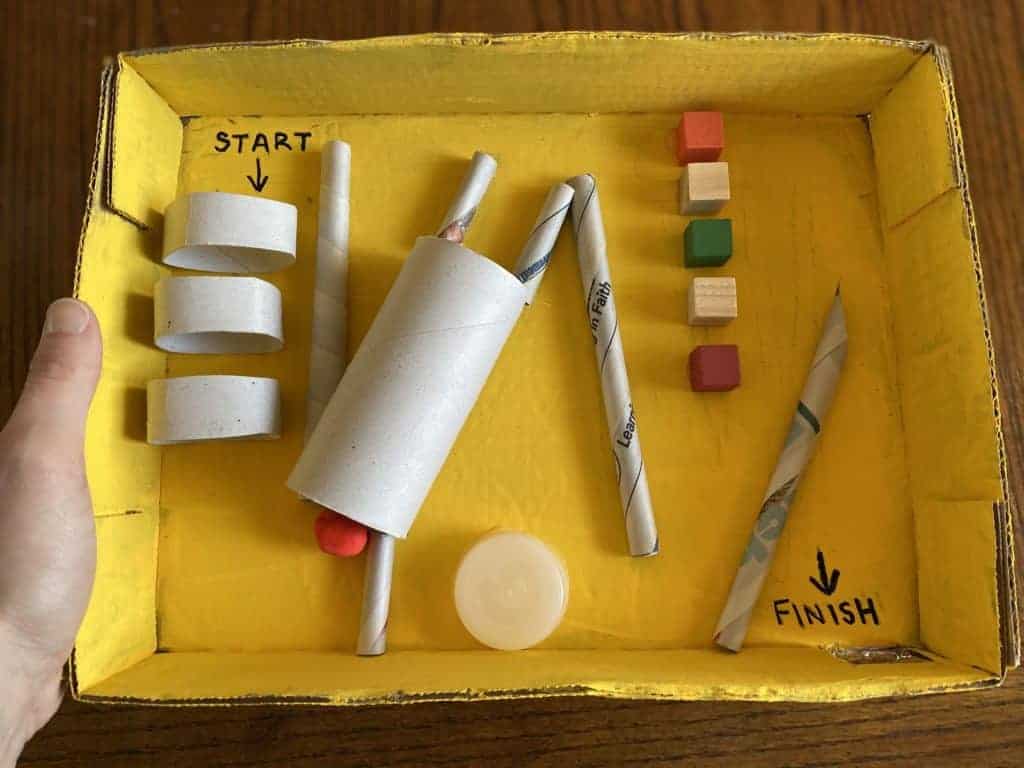
Follow Up
Post a picture or video of your finished product to our Pinnguaq Facebook page! We would love to see the creations that you came up with!
If you enjoyed creating your own marble maze try this follow up activity that teaches you how to design, create, build and navigate through a maze using Scratch Coding!
Useful Resources
- What’s an Engineer? Crash Course Kids #12.1
- The Engineering Process: Crash Course Kids #12.2
- PBS Design Squad
- BBC Bitesize: Introduction to Computational Thinking




